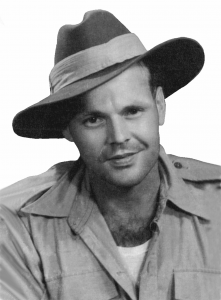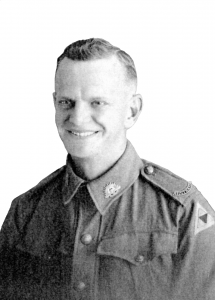Nacompaton, Nakompaton, Nakom Pathom Hospital - Thailand
Nacompaton, Nakom Pathom Hospital Hospital Camp – Thailand
Established by Japanese December 1943 to handle chronic and heavy sick patients
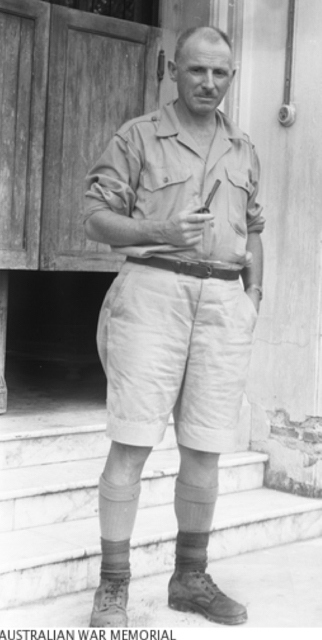
Surgeon Albert Coates was regarded as the greatest surgeon in Thailand-Burma. Please read further about Coates life.
In Nakhon Pathom, Coates, was appointed Chief Medical Officer, and was charged with developing the new hospital, and with Krantz and Capt McNeally to help he supervised as many of the POW arrived and they constructed a hospital of up to 10,000 beds. By January 1944, 50 large huts for up to 200 men were built, and separate medical huts were constructed. There were 1500 in the dysentery block alone. A general purpose medical committee was formed by Coates as CMO, Lt-Col Malcolm (British), and Lt-Col Larsen (Dutch), to direct medical policy.
Nacompaton was located about 30 miles west of Bangkok.
The Pagoda shown below can be clearly seen in the above arial photograph. The Allied bomber pilots used this as a beacon when flying bombing missions.

NAKOM PATON, THAILAND. 1945-09-19. AUSTRALIAN EX- PRISONERS OF WAR IN FOREGROUND WITH LARGE PAGODA AT NAKOM PATON IN BACKGROUND. THIS IS THE LARGEST PAGODA IN THAILAND. LEFT TO RIGHT, NX26286 BOMBARDIER A. A. MORRIS OF AUBURN, NSW, 2/15TH AUSTRALIAN FIELD REGIMENT ; WX9152 PRIVATE C. W. BEASLAND, OF JUNDECOTT, WA, 13TH AUSTRALIAN GENERAL HOSPITAL; VX62477 CORPORAL P. J. COOK OF ARMADALE, VIC, 8TH DIVISION SIGNALS; PRIVATE W. L. THOMAS OF PERTH, WA, 2/4TH AUSTRALIAN MACHINE GUN BATTALION. (PHOTOGRAPHER LIEUTENANT N. B. STUCKEY)
Dr. Albert Coates was appointed Senior Medical Officer of this Hospital and Convalescing Camp. Late in January 1944, Albert Coates, Dr, Kranz and several orderlies were sent from Tamarkan to where this camp was being built.
Several 2/4th men involved in the construction of this camp included Eric Fraser and Frank ‘Blue’ Evans. The POW work party was assisting Thai builders to erect timber huts. The camp located on about 200 acres had concrete latrines and an almost decent operating room – with the description decent meaning ‘better than most other camps.’ When completed the large camp hospital would house 10,000 sick and injured. There were 50 huts each accommodating 200 men. There were no beds just wooden platforms on which the sick men lay on grass mats.
Once the Railway was finished and at the end of December 1943 Dr Coates was evacuated from Kilo 55. The sick were divided into two groups. The Japanese classification – light sick and serious sick. Light sick was a term to describe men who would not die immediately – but men with disease from which they may recover or kill them within 3-4 months. The sick were transported by box trucks to near Bangkok. The so-called light sick to Kanchanaburi and heavy sick to Nakompaton.
55 Kilo Camp closed down on 24 December 1943.
On 15 March 1944 Coates was called to the Japanese HQ and informed 1,000 patients would arrive around the 30th March. Wiithin three months the camp held 8,000-10,000 patients (there are various reports) – the residual heavy sick from the whole of Burma-Thai railway with the exception of F and H Force who had been returned to Singapore.
15,000 European POWs remained dead beside the railway. We have no idea of greater numbers of natives.
2/4th amputees who remained at Nacompaton until the end of the war included Syd Gorringe, Eric Ryan, Tom Barbour and Allan Bamford. Besides many amputees, POWs were sent to this camp to build up their strength following the completion of the Railway. As their health improved slightly POWs were called out of Nacompaton in work parties.
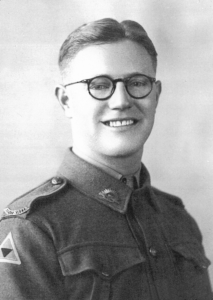 Left: Bamford
Left: Bamford
Between December 1943 and April 1944 the majority of POWs who had been working on the railway had been brought south to camps in Thailand. To Chungkai, Tamarkan, Kanchanaburi, Tamaung, Non Pladuk and Nacompaton.
Thankfully since ‘speedo’ conditions and rations began to improve.
A well built base hospital was soon operating at Nacompaton – accepting patients from Chungkai, Kanchanaburi and Non Pladuk. It was too late for too many men who were past the point of recovery. At the first meeting in May 1944, 18 medical officers representing Dutch, British and Australia attended and included Japanese Doctor, Higuchi. These meetings occurred weekly and minutes taken and copies of each one sent to the Australian, British and Dutch Army Medical Headquarters after the war.
As Col Coates said ‘By the end of 1943 the Japanese had done their worst in using up their POWs by determined neglect and deprivation of food and medical supplies‘.
At Nacompaton Coates said ‘the fortitude of the sick, the resorcefulness of many of their less sick comrades, the devotion of the rank and file of RAMC and AASMC personnel and the loyalty of the doctors gathered around me, with the passive acquiescence (but no active help) of the Japanese, enabled me to salvage the great majority from the 10,000 who passed through our hands in that year’.
The mortality figure in 1944-45 was somewhere around 3%.
On 6 June Lt-Col Weary Dunlop arrived to also assist the medical staff.
In February 1944 the Japanese began to make arrangements to send work parties to the Japanese home island. Originally it was intended to send POWs with technical skills or knowledge which could be utilised in heavy industry.
But no Australian POW was prepared to admit to having a trade or skill that would aid the Japanese war effort! In particular after being beaten, starved and worked to death during speedo!
When the Japanese realised their original plan was not possible they then stated they intended to send 10,000 POWs, mostly from enlisted ranks with just enough officers to control them, to Japan for general labouring work.
When Japan surrendered in August 1945, Nacompaton became an Allied Forces collection centre for ex-POWs who were either moved out via Bangkok to Singapore direct or via Rangoon to Singapore.
Nakom Paton 18 Sept 1945
The above men were in Ward 18 being treated for recurrent malaria. They were working on Japanese defence positions at Nieke near to the Burma-Thailand border when Japan surrendered.
Please read further about Nacompaton
Below are excerpts from Albert Coates from an address delivered in 1946. These are chosen for their interest and detail.
.





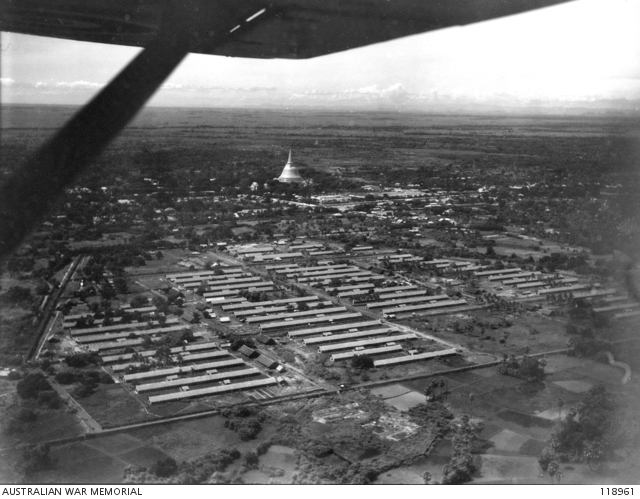



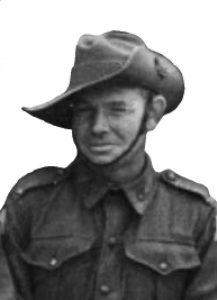
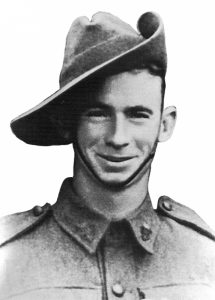 Left: Eric Ryan WX16767
Left: Eric Ryan WX16767